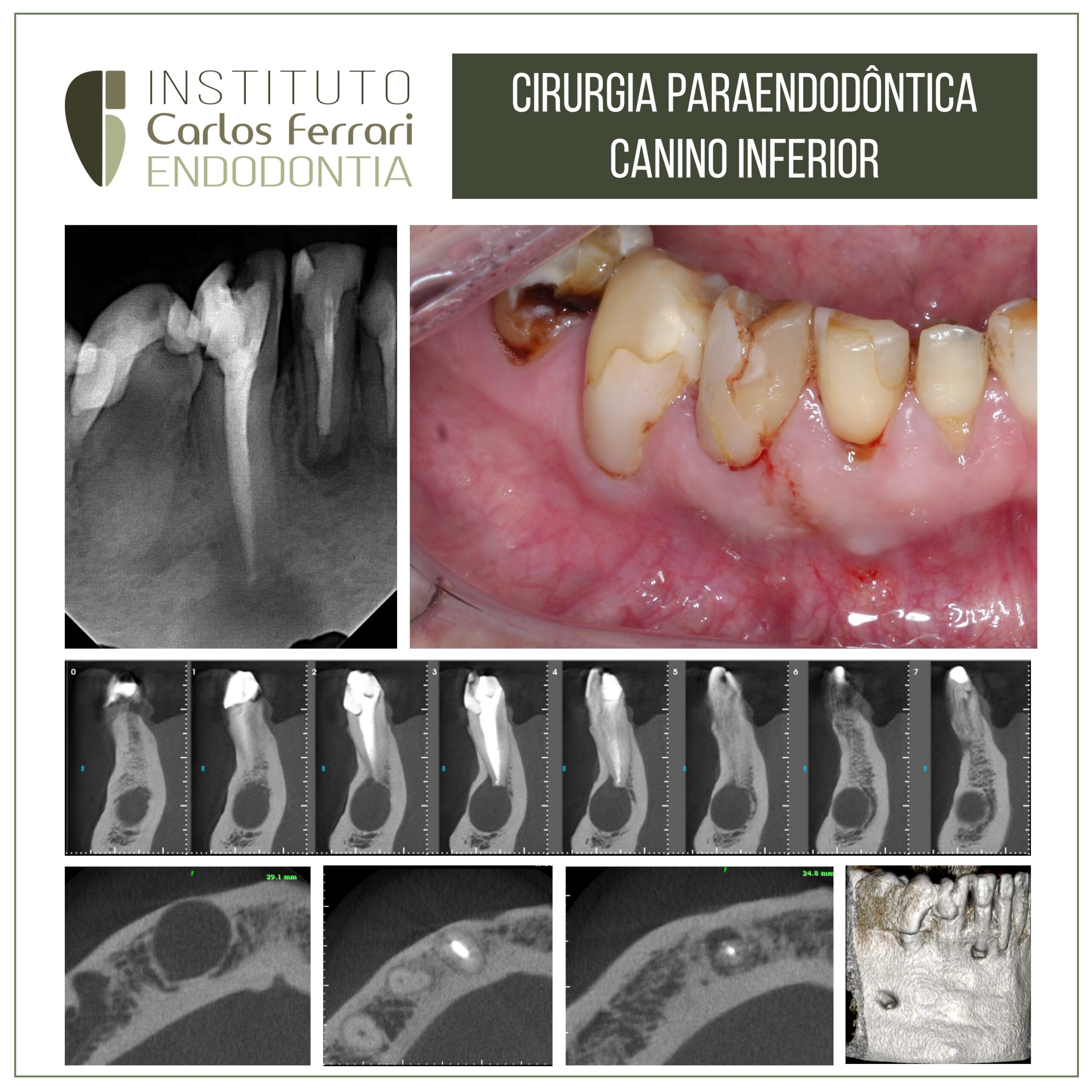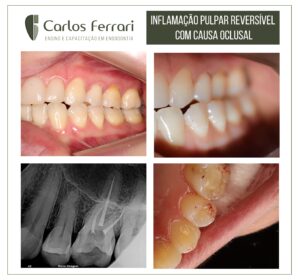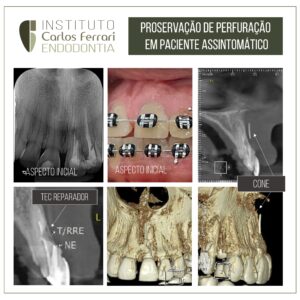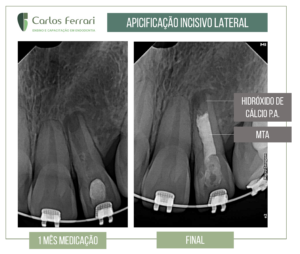Apicectomia em canino inferior. Relato de caso. Paciente foi indicado para cirurgia paraendodôntica no canino inferior direito, após tratamento e retratamento realizado, sem sucesso para a reparação de lesão periapical.
Paciente não relatou quaisquer sintomas. A radiografia e a tomografia revelaram imagem radiolúcida periapical de grandes dimensões que não foi reparada, após retratamento satisfatório, realizado por especialista. O tratamento proposto foi a apicectomia, por meio de cirurgia paraendodôntica.
Caso conduzido pelas alunas Miquele Viana e Bruna Regiani, da especialização em endodontia da APCD Bragança Pta.
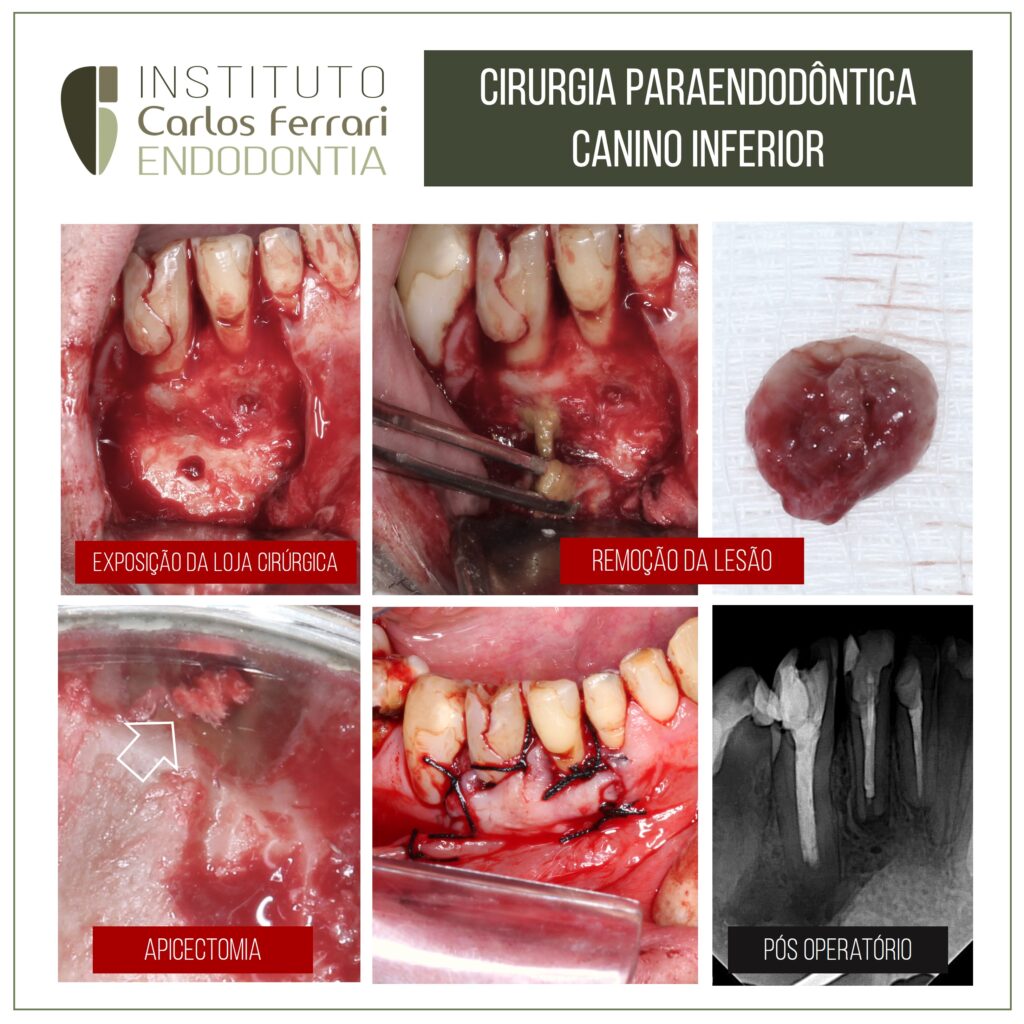
Apicectomia in: Leonardi et al. Cirurgia parendodôntica: Avaliação de diferentes técnicas para a realização da apicectomia. RSBO v. 3, n. 2, 2006
Resumo
A apicectomia é um ato cirúrgico em que é realizada a ressecção apical da raiz. É indicada em casos de raízes dilaceradas que impedem um tratamento convencional, perfurações da raiz no terço apical, presença de ramificações não obturadas e instrumentos endodônticos fraturados, cujos tratamentos foram incapazes de solucionar o problema via canal radicular. O insucesso no tratamento endodôntico ocorre normalmente em virtude da presença de microrganismos nas profundidades do sistema de canais radiculares que resistiram aos procedimentos de limpeza e modelagem. O objetivo do presente estudo foi fazer uma revisão literária sobre fatores relacionados aos recursos técnicos para a realização da apicectomia e às condições anatômicas e histológicas. Por meio da revisão de literatura, pôde-se concluir que vários elementos influenciam no sucesso após a realização de apicectomia, a saber: a região radicular na qual o corte é feito, o uso de brocas ou laser na sua confecção e o envolvimento das variações anatômicas apicais.
Introdução
A cirurgia parendodôntica é um procedimento seguro e adequado para o tratamento de dentes com lesões periapicais que não respondem ao tratamento endodôntico convencional ou quando o retratamento não é possível de ser realizado. O sucesso de tal cirurgia tem sido relatado em 80% dos casos nos últimos anos. Esse alto índice pode estar relacionado às novas técnicas cirúrgicas, aos novos instrumentos cirúrgicos , às novas pontas ultrasônicas e à melhora na qualidade dos
materiais retroobturadores.
Os critérios de avaliação geralmente estão limitados às condições clínicas e radiográficas, embora poucos estudos tenham considerado os resultados histológicos nos casos de insucesso. Durante o procedimento, o ápice geralmente é cortado com brocas cirúrgicas em alta velocidade e a superfície desse corte deve se apresentar com aspecto liso e plano, sem a presença de degraus ou irregularidades, que agem como irritantes ou estimulam a reabsorção dentinária durante o processo de reparo.
Apicectomia


